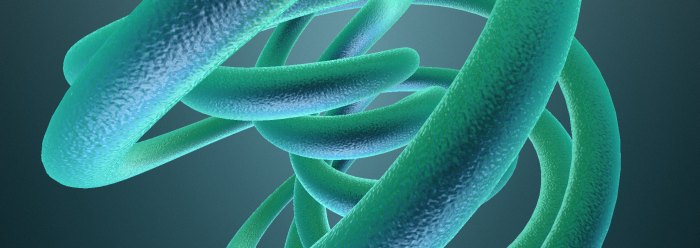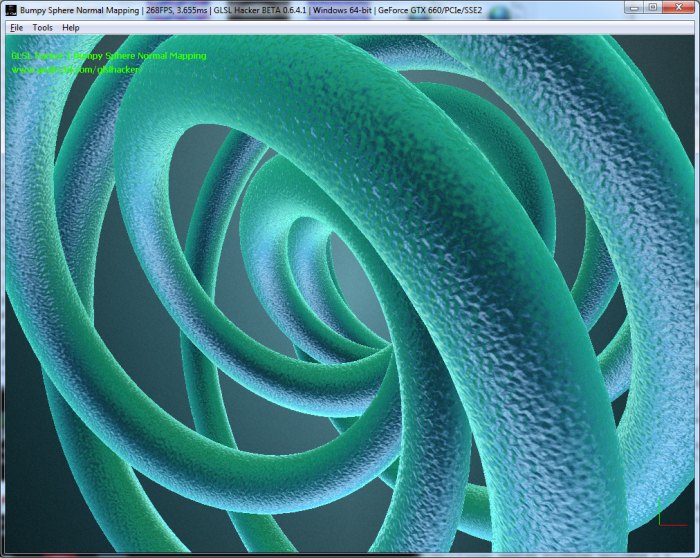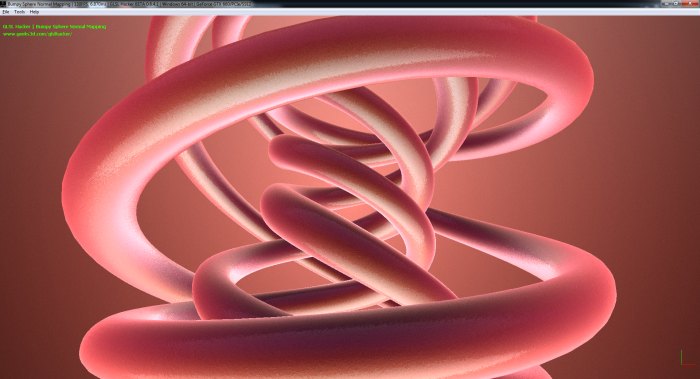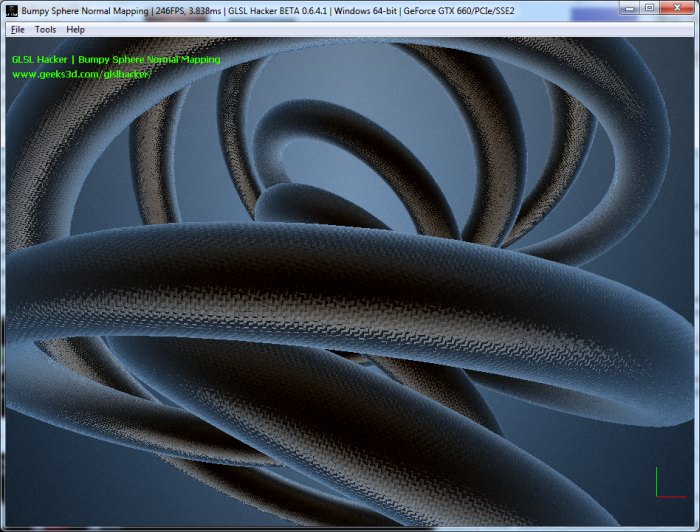
|
|
Here is a new entry in the GLSL Shader Library: a bump sphere environment normal mapping shader.
A demo for GLSL Hacker is available in the moon3d/gl-320-bumpy-sphere-normal-mapping/ folder of the code sample pack. The latest GLSL Hacker can be downloaded from this page. Like the shader in this article, this bumpy shader computes the tangent space directly in the fragment shader. |
Here are the GLSL vertex and fragment shaders (for OpenGL 3.2+):
Vertex shader
#version 150
in vec4 gxl3d_Position;
in vec4 gxl3d_Normal;
out VertexData
{
vec4 Position;
vec4 OPosition;
vec4 Normal;
vec4 ONormal;
vec4 UV;
} vertex;
// GLSL Hacker automatic uniforms
uniform mat4 gxl3d_ModelViewProjectionMatrix;
uniform mat4 gxl3d_ModelViewMatrix;
void main()
{
vec4 P = gxl3d_ModelViewMatrix * gxl3d_Position;
vertex.OPosition = P;
gl_Position = gxl3d_ModelViewProjectionMatrix * gxl3d_Position;
vertex.UV = normalize(P);
vertex.Position = gxl3d_Position;
vertex.Normal = gxl3d_ModelViewMatrix * gxl3d_Normal;
vertex.ONormal = gxl3d_Normal;
}
Fragment shader
#version 150
in VertexData
{
vec4 Position;
vec4 OPosition;
vec4 Normal;
vec4 ONormal;
vec4 UV;
} vertex;
uniform sampler2D textureMap;
uniform sampler2D normalMap;
uniform vec3 color;
uniform float normalScale;
uniform float texScale;
uniform float useSSS;
uniform float useScreen;
float random(vec3 scale,float seed)
{return fract(sin(dot(gl_FragCoord.xyz+seed,scale))*43758.5453+seed);}
out vec4 FragColor;
void main()
{
vec3 vNormal = vertex.Normal.xyz;
vec3 vONormal = vertex.ONormal.xyz;
vec4 vPosition = vertex.Position;
vec4 vOPosition = vertex.OPosition;
vec3 vU = vertex.UV.xyz;
vec3 n = normalize( vONormal.xyz );
vec3 blend_weights = abs( n );
blend_weights = ( blend_weights - 0.2 ) * 7.;
blend_weights = max( blend_weights, 0. );
blend_weights /= (blend_weights.x + blend_weights.y + blend_weights.z);
vec2 coord1 = vPosition.yz * texScale;
vec2 coord2 = vPosition.zx * texScale;
vec2 coord3 = vPosition.xy * texScale;
vec3 bump1 = texture2D(normalMap, coord1).rgb;
vec3 bump2 = texture2D(normalMap, coord2).rgb;
vec3 bump3 = texture2D(normalMap, coord3).rgb;
vec3 blended_bump = bump1 * blend_weights.xxx +
bump2 * blend_weights.yyy +
bump3 * blend_weights.zzz;
vec3 tanX = vec3(vNormal.x, -vNormal.z, vNormal.y);
vec3 tanY = vec3(vNormal.z, vNormal.y, -vNormal.x);
vec3 tanZ = vec3(-vNormal.y, vNormal.x, vNormal.z);
vec3 blended_tangent = tanX * blend_weights.xxx +
tanY * blend_weights.yyy +
tanZ * blend_weights.zzz;
vec3 normalTex = blended_bump * 2.0 - 1.0;
normalTex.xy *= normalScale;
normalTex.y *= -1.;
normalTex = normalize( normalTex );
mat3 tsb = mat3( normalize( blended_tangent ),
normalize( cross( vNormal, blended_tangent ) ),
normalize( vNormal ) );
vec3 finalNormal = tsb * normalTex;
vec3 r = reflect( normalize( vU ), normalize( finalNormal ) );
float m = 2.0 * sqrt( r.x * r.x + r.y * r.y + ( r.z + 1.0 ) * ( r.z + 1.0 ) );
vec2 calculatedNormal = vec2( r.x / m + 0.5, r.y / m + 0.5 );
vec3 base = texture2D( textureMap, calculatedNormal ).rgb;
float rim = 1.75 * max( 0., abs( dot( normalize( vNormal ),
normalize( -vOPosition.xyz ) ) ) );
base += useSSS * color * ( 1. - .75 * rim );
base += ( 1. - useSSS ) * 10. * base * color * clamp( 1. - rim, 0., .15 );
if (useScreen == 1.)
{
base = vec3( 1. ) - ( vec3( 1. ) - base ) * ( vec3( 1. ) - base );
}
float nn = .05 * random( vec3( 1. ), length( gl_FragCoord ) );
base += vec3( nn );
FragColor = vec4( base.rgb, 1. );
}
Forum thread if needed: Bumpy Sphere Env Normal Mapping.



Credits: this shader is based on this WebGL demo.